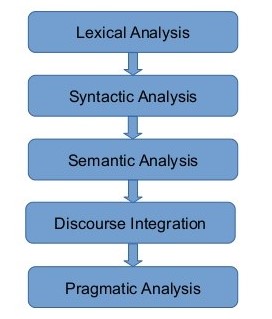From tracking and automation, to communication and deadline evaluation, check out how Gantt charts can improve your workflow.
by Sandeep Kashyap·Jan. 18, 19
Source: https://dzone.com/articles/how-do-gantt-charts-make-project-managers-life-eas
Source: https://dzone.com/articles/how-do-gantt-charts-make-project-managers-life-eas
Do you want to have a way to see how
tasks are progressing? Want to see what roles are there in a project and
how others depend on them? If you’ve always wanted a quick view of how
far behind or ahead of schedule your project is, then it’s time for
Gantt charts.
We believe that you might have already heard about Gantt
charts considering their popularity in the project management domain. As
a new project manager or team leader, it’s absolutely fair on your part
to have some apprehensions about them.
Fret not, we are going to clear all your doubts regarding
Gantt charts, the benefits they offer, and their purpose in project
management in this post. Before that, let’s learn a little bit about
their history.
Historical Background
People often think that Henry Gantt
was the man behind the Gantt charts, but in reality, it was Karol
Adamiecki, a Polish engineer who devised these charts for better
planning in 1896.
Adamiecki published his work only in Polish and Russian and
the first ever Gantt chart was named as the Harmonogram. After some
years, Gantt started working on these charts and made them popular, thus
the name "Gantt charts."
Why Use Gantt Charts in Project Management
The best thing about Gantt charts is that they are sufficient
in equipping you with the right tools to plan, manage, and schedule
projects. Gantt chart software also helps you to automate processes, create dependencies, add milestones, and identify critical paths.
A Visual Timeline of Tasks
Gantt charts provide a visual timeline of the project so
that you can schedule your tasks, plan, and iterate your projects
quickly and more efficiently. One gets to see an overview of milestones
and other important information that provides a clear picture of who’s
working on what and other deadlines related to them. Such information
plays a key role in effective project planning and tracking by bringing together everything you need to meet deadlines and deliver projects successfully.
Keeps Everyone on The Same Page
With Gantt charts, you get a unified view of all the
projects at one central place, making it easy for you to handle team
planning and scheduling. Also, the visual nature of these charts makes
it easier for people working together to set mutually agreed upon
efforts and work in unison to achieve the desired goal. It reduces any
chances of misunderstanding among team members while working on
difficult tasks as everyone is already on the same page.
A Better Understanding of Task Relationships
Often, a task is both dependent and related to other tasks
as well. These charts help you understand how various tasks are
interrelated. They also help you set dependencies between different
tasks to reflect how a change in their scheduling is going to impact the
overall project progress of a project. With a better understanding of
task relationships, one can assure optimum workflow and maximized
productivity.
Allocate Resources Effectively
A Gantt chart software helps you delegate work items to
different people and allocate resources in a way without overloading
anyone. By appropriately following the chart, you can adjust or share
resources if someone in a team needs help. If resources know what to do
when and are managed properly, there is a better chance of completing
the project on time and within the desired budget, too.
Seamless Communication
Anyone working on a project doesn’t have to run to another
team member to ask a question; you can communicate easily and seamlessly
with a Gantt chart software. Once a plan is devised, approved, and
started, forget about remembering who’s working on what as the visual
nature of Gantt charts tell everything you need to know at one place.
That’s how Gantt charts have made things easier and stress-free for
project managers so that they can focus on getting things done.
Track the Project Progress
Whether your project is small or complex, one of the crucial
things for a project manager is to see how a project is progressing and
whether things are on track or not. Gantt charts show the complete
percentage of every task being handled by team members that give an
estimation of the time needed to get tasks done. Gantt charts are indeed
one of the safest bets to predict the project progress and see if you
need to change your strategy or not.
More Accountability
Every Gantt chart software comes with easy drag-and-drop for
efficient scheduling. Whether it’s about scheduling start and end dates
to rescheduling them or setting dependencies, everything works well
with Gantt charts. Team members get a sense of accountability while
moving tasks and the task completion bar constantly reminds them to
deliver a project before the deadline.
More Clarity, Less Confusion
Gantt charts are simple and straightforward. Apart from its
intuitiveness, they use the critical chain to highlight important tasks.
Gantt charts highlight the critical path that helps you identify tasks
which are directly impacting the overall progress of a project. The
clarity helps team members to know what’s working and what’s not so that
they can change their strategy to achieve their goals. This lessens the
confusion and brings more clarity in the process.
Complete Projects on Time
As Gantt charts provide a unified view of tasks, projects,
and resources, they help you focus your precious time, effort, and
brainpower on things that actually matter. When team members visualize
their efforts in a project and how the progress of the entire project is
somehow dependent on them, it provides real motivation to them.
Stay Ahead Always
Not only one can stay on top of things with Gantt charts but
they also help project managers to stay ahead of their schedule if they
follow Gantt charts precisely. Project managers can analyze the team
performance and figure out patterns that must be readjusted for better
output.
Conclusion
By now you might have understood the importance of Gantt
charts in a project manager’s life. However, if your work revolves
around complex projects, you might want to go for a task management software
that enables more than using a Gantt chart. There are many project
management solutions with elaborated features to choose from. Get a free
trial, and make the best choice.






















